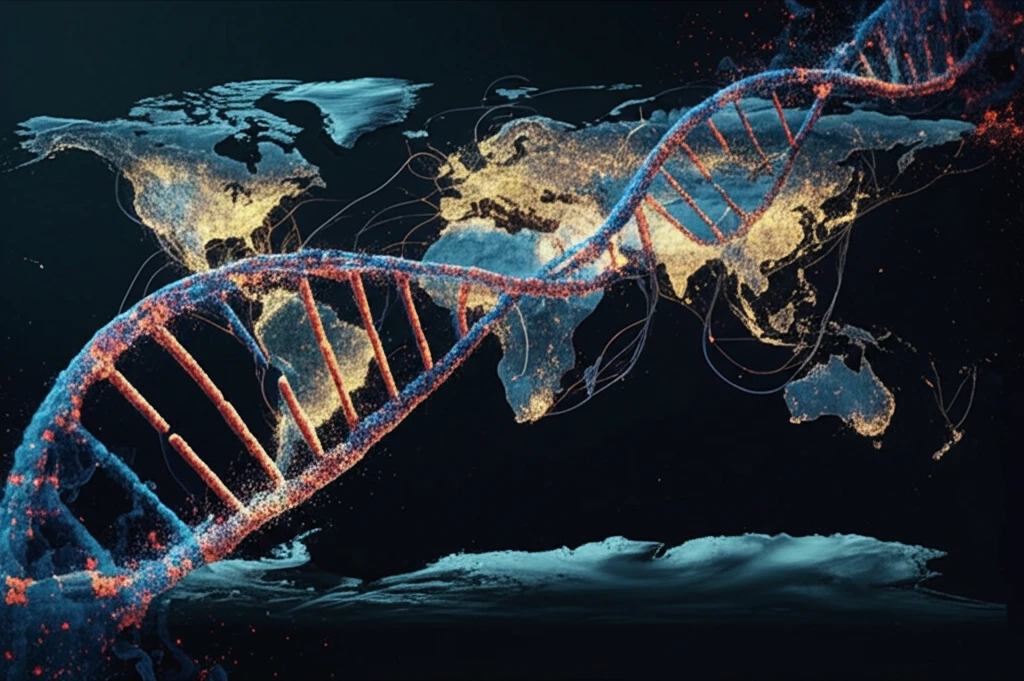
Decoding Our Ancestry: What Evolutionary Genetics Reveals About Human Origins
"Explore how genetics unravels the complex story of human evolution, migrations, and ancestral connections"
Evolutionary genetics has revolutionized biological anthropology, offering powerful tools to understand our origins and diversity. Early geneticists like Ronald Fisher and Sewall Wright laid the groundwork, developing methods to quantify relationships, assess diversity, and infer natural selection. However, their reach was limited by the scarcity of available genetic data.
The advent of DNA sequencing and genome-wide studies has dramatically expanded our ability to analyze human variation. This progress has led to new approaches for interpreting biological information, building upon the fundamental principles established by earlier pioneering studies. Today, researchers combine these established principles with innovative solutions to dissect detailed genomic data and complete genome sequences.
At the heart of understanding population genetics lies the concept of equilibrium. Panmictic populations, where reproductive partners are randomly chosen, provide a baseline. In such populations, allele frequencies remain stable across generations after just one generation of random mating, and genotype frequencies follow a predictable pattern. This principle is known as the Hardy-Weinberg equilibrium.
Unraveling Human Diversity: Beyond Race

While the Hardy-Weinberg equilibrium offers a theoretical foundation, real-world populations are rarely in perfect equilibrium. Factors such as non-random mating, mutation, migration, natural selection, and genetic drift continuously influence allele frequencies, causing populations to evolve. By comparing real-world populations to idealized equilibrium models, we can infer the factors shaping their biological history.
- Approximately 80% of DNA variants are cosmopolitan, found across all continents.
- These variants form haplotypes which are geographically restricted but not confined to any single continent or population.
- Genetic differences within groups far exceed the differences between groups.
- The concept of race has been consistently changed since 1890, with inconsistent results.
Tracing Our Past, Charting Our Future
The ongoing revolution in DNA sequencing technologies promises to further illuminate our understanding of human origins. As we analyze ancient genomes and compare them to modern populations, we gain insights into migration patterns, admixture events, and the relationships between different human groups. However, it’s crucial to avoid simplistic comparisons and recognize that current populations may not be direct descendants of those who lived in the same location in the past. Factors such as genetic drift, selection pressures, and individual movements can all influence the distribution of genetic variation.
